A L P Cameron was born in Moonee Ponds, Melbourne in 1845. In 1864 Cameron left the colony of Victoria for Penola in South Australia and then Queensland where he ‘pursued a somewhat adventurous life in the far west of the northern colony.’ In 1878 he moved to the Riverina area of New South Wales, working initially as a storekeeper and eventually becoming station manager. In 1879, with two of his brothers, Cameron took up selections at Conargo, north-east of present day Deniliquin. An 1894 news report noted it was this experience that ‘first drew his attention to the land laws of the colony’, and over the following years he regularly wrote to newspapers about land legislation and settlement. In 1884 he moved to Mossgiel and over the years ran unsuccessfully for office and was viewed as a local community leader, being ‘frequently selected at public meetings to represent his district’ on matters such as land leasing, railways and the costs of land management (such as controlling rabbits) on smaller landholders. In his later years he retired to Waverley, Sydney. Cameron died in 1908.
Howitt acknowledged Cameron as one of the ‘certain gentlemen to whom I am especially indebted’ in the introduction to his 1904 book The Native Tribes of South-East Australia. Cameron provided information on Barkinji (Barkindji or Paakantyi), Ithi-Ithi (Yitha Yitha), Muthi-muthi (Mutti Mutti or Muthi Muthi), Ta-tathi (Dadi Dadi), Wathi-wathi (Wadi Wadi), Wiradjuri, Wonghibon (Wangaaypuwan) and Unghi (Gunggari community or Kogai community) people. Cameron was described as having ‘the welfare of the aborigines at heart’ and being ‘instrumental in securing reserves for their benefit, and few were better acquainted with their vocabulary and habits.’ Besides his collection of information for Howitt, Cameron undertook his own anthropological pursuits and writings. He was a member of the Anthropological Society of New South Wales and a contributor to their journal Science of Man. He had articles about Aboriginal people of New South Wales published in the local press and developed his own group of informants, who corresponded with him in his role as an Honorary Corresponding member of the Anthropological Society of New South Wales. Notably, in the same issue of the Journal of the Anthropological Institute of Great Britain and Ireland that Howitt had his article about the Jeraeil of the Gunaikurnai published, Cameron had his article ‘Notes of Some Tribes of New South Wales’ published.
Whilst Cameron was valued amongst the settler community for his knowledge about Aboriginal people, his knowledge came from his role within the colonial process. Cameron was cognisant of this to a degree, noting in his 1885 article that ‘our present position in respect to the original occupiers of the soil is not an equitable one, is beyond dispute. We have taken from them a country, where, after their own fashion, they were contented and happy, and in return we have bestowed on them a civilisation which destroys them.’ This did not prevent him from engaging in the removal of items from country. In 1907 Cameron gifted the Anthropological Society of New South Wales some ‘mill stone and crushers’ (grinding stones) that he had found near Mossgiel. He noted these stones were used for ‘grinding grass and other seeds’ but his description of ‘olden times’ being when these items were used both served to justify their removal and was yet another indication of the disruption of colonisation to Aboriginal people.
References:
‘Mr. A. L. P. Cameron’, The Hay Standard and Advertiser for Balranald, Wentworth, Maude, 24 February 1894, p. 2, accessed 16 July 2019,
A L P Cameron
http://nla.gov.au/nla.news-article144647615.
‘The Late Mr. A. L. P. Cameron’, The Riverine Grazier, 2 June 1908, p. 4, accessed 16 July 2019, http://nla.gov.au/nla.news-article141088637.
‘Death of Mr. A. L. P. Cameron’, The Farmer and Settler, 29 May 1908, p. 2, accessed 16 July 2019, http://nla.gov.au/nla.news-article115963423.
‘Hon. Corresponding Members’, Science of Man, 27 July 1904, vol. 7, no. 6, p. 82.
A. L. P. Cameron 1885, ‘Notes on Some Tribes of New South Wales’, The Journal of the Anthropological Institute of Great Britain and Ireland, vol. 14, pp. 344-370.
A. L. P. Cameron, ‘Aboriginal Place Names’, Science of Man, 21 November 1899, vol. 2, no. 10, p. 195.
A. L. P. Cameron, ‘On Some Tribes of Western New South Wales’, Science of Man, 21 December 1899, vol. 2, no. 11, pp. 217-218.
A. L. P. Cameron, ‘Aboriginal Rock Paintings: In the Interior of New South Wales’, Science of Man, 22 September 1900, vol. 3, no. 8, pp. 136-137.
A. L. P. Cameron, ‘The Marriage Law as Practised by the Wonghibone Tribe’, Science of Man, 23 June 1902, vo. 5, no. 5, pp. 83-84.
A. L. P. Cameron, ‘Marriage Laws of the Aboriginal Tribes of N.S.W.’, Science of Man, 27 December 1902, vol. 5, no. 11, pp. 176-178.
A. L. P Cameron, ‘Traditions and Folklore of the Aborigines of New South Wales’, Science of Man, 22 April 1903, vol. 6, no. 3, pp. 46-48.
A. L. P. Cameron, ‘On Two Queensland Tribes’, Science of Man, 22 March 1904, vol. 7, no. 2, pp. 27-29.
A. L. P. Cameron, ‘Notes on a Tribe Speaking the “Boontha-Murra” Language’, Science of Man, 27 July 1904, vol. 7, no. 6, pp. 91-92.
A. L. P. Cameron, ‘Native Grinding and Crusher Stones’, Science of Man, 1 October 1907, vol. 9, no., 10, p. 158.
A. W. Howitt, The Native Tribes of South-East Australia, Macmillan and Co., Limited, London, 1904, pp. x, xi.
‘The Late Mr. A. L. P. Cameron’, The Riverine Grazier, 2 June 1908, p. 4, accessed 16 July 2019, http://nla.gov.au/nla.news-article141088637.
‘Death of Mr. A. L. P. Cameron’, The Farmer and Settler, 29 May 1908, p. 2, accessed 16 July 2019, http://nla.gov.au/nla.news-article115963423.
‘Hon. Corresponding Members’, Science of Man, 27 July 1904, vol. 7, no. 6, p. 82.
A. L. P. Cameron 1885, ‘Notes on Some Tribes of New South Wales’, The Journal of the Anthropological Institute of Great Britain and Ireland, vol. 14, pp. 344-370.
A. L. P. Cameron, ‘Aboriginal Place Names’, Science of Man, 21 November 1899, vol. 2, no. 10, p. 195.
A. L. P. Cameron, ‘On Some Tribes of Western New South Wales’, Science of Man, 21 December 1899, vol. 2, no. 11, pp. 217-218.
A. L. P. Cameron, ‘Aboriginal Rock Paintings: In the Interior of New South Wales’, Science of Man, 22 September 1900, vol. 3, no. 8, pp. 136-137.
A. L. P. Cameron, ‘The Marriage Law as Practised by the Wonghibone Tribe’, Science of Man, 23 June 1902, vo. 5, no. 5, pp. 83-84.
A. L. P. Cameron, ‘Marriage Laws of the Aboriginal Tribes of N.S.W.’, Science of Man, 27 December 1902, vol. 5, no. 11, pp. 176-178.
A. L. P Cameron, ‘Traditions and Folklore of the Aborigines of New South Wales’, Science of Man, 22 April 1903, vol. 6, no. 3, pp. 46-48.
A. L. P. Cameron, ‘On Two Queensland Tribes’, Science of Man, 22 March 1904, vol. 7, no. 2, pp. 27-29.
A. L. P. Cameron, ‘Notes on a Tribe Speaking the “Boontha-Murra” Language’, Science of Man, 27 July 1904, vol. 7, no. 6, pp. 91-92.
A. L. P. Cameron, ‘Native Grinding and Crusher Stones’, Science of Man, 1 October 1907, vol. 9, no., 10, p. 158.
A. W. Howitt, The Native Tribes of South-East Australia, Macmillan and Co., Limited, London, 1904, pp. x, xi.
Found in Transcriptions
-
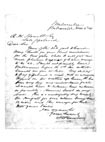 Letter from ALP Cameron 6 December 1881Pages 1Registration Number XM114Author —Physical Description Letter, handwritten in ink. One quarto sheet, one page. Signed and dated. Condition: good.
Letter from ALP Cameron 6 December 1881Pages 1Registration Number XM114Author —Physical Description Letter, handwritten in ink. One quarto sheet, one page. Signed and dated. Condition: good. -
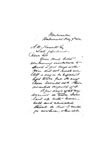 Letter from ALP Cameron 7 July 1882Pages 3Registration Number XM116Author —Physical Description Letter, handwritten in ink. One folded sheet, three pages. Signed and dated. Condition: good.
Letter from ALP Cameron 7 July 1882Pages 3Registration Number XM116Author —Physical Description Letter, handwritten in ink. One folded sheet, three pages. Signed and dated. Condition: good. -
 ALP Cameron to Howitt 14 August 1883Pages 2Registration Number XM121Author —Physical Description Letter, handwritten in ink. One quarto sheet, two pages. Dated and signed. Condition: good.
ALP Cameron to Howitt 14 August 1883Pages 2Registration Number XM121Author —Physical Description Letter, handwritten in ink. One quarto sheet, two pages. Dated and signed. Condition: good. -
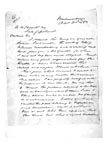 A L P Cameron to Howitt 20 October 1883Pages 2Registration Number XM122Author —Physical Description Letter, handwritten in ink. One quarto sheet, two pages. Signed and dated. Annotation top left by A.W. Howitt 'Reply 10/11/83'. Condition: good.
A L P Cameron to Howitt 20 October 1883Pages 2Registration Number XM122Author —Physical Description Letter, handwritten in ink. One quarto sheet, two pages. Signed and dated. Annotation top left by A.W. Howitt 'Reply 10/11/83'. Condition: good. -
 Bennett to Howitt 27/05/1880
Bennett to Howitt 27/05/1880 -
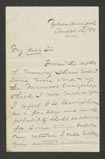 Bennett to Howitt 12/08/1880
Bennett to Howitt 12/08/1880 -
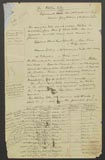 Notes by Howitt on Kulin from BarakPages 1Registration Number hw0391Author Howitt, Alfred WilliamPhysical Description Handwritten notes, undated and numbered pages. Additional notations and annotations in the left hand margins; includes a newspaper article.
Notes by Howitt on Kulin from BarakPages 1Registration Number hw0391Author Howitt, Alfred WilliamPhysical Description Handwritten notes, undated and numbered pages. Additional notations and annotations in the left hand margins; includes a newspaper article.
Also found in
-
 Fison to Howitt n.d.Registration Number hw0048Author —Physical Description —
Fison to Howitt n.d.Registration Number hw0048Author —Physical Description — -
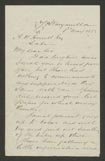 From Cameron to Howitt 8/05/1885Registration Number hw0135Author —Physical Description —
From Cameron to Howitt 8/05/1885Registration Number hw0135Author —Physical Description — -
 Notes on WembaioRegistration Number hw0177Author —Physical Description —
Notes on WembaioRegistration Number hw0177Author —Physical Description — -
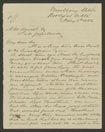 Cameron to Howitt 5/2/1886Registration Number hw0178Author —Physical Description —
Cameron to Howitt 5/2/1886Registration Number hw0178Author —Physical Description — -
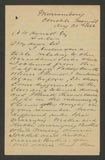 Cameron to Howitt 21/8/1886Registration Number hw0179Author —Physical Description —
Cameron to Howitt 21/8/1886Registration Number hw0179Author —Physical Description — -
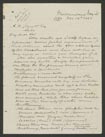 Cameron to Howitt 18/11/1886Registration Number hw0180Author —Physical Description —
Cameron to Howitt 18/11/1886Registration Number hw0180Author —Physical Description — -
 Cameron to Howitt 12/12/1899Registration Number hw0181Author —Physical Description —
Cameron to Howitt 12/12/1899Registration Number hw0181Author —Physical Description — -
 Howitt to Cameron 29/11/1899Registration Number hw0182Author —Physical Description —
Howitt to Cameron 29/11/1899Registration Number hw0182Author —Physical Description — -
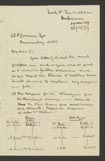 Howitt to Cameron 26/12/1899Registration Number hw0183Author —Physical Description —
Howitt to Cameron 26/12/1899Registration Number hw0183Author —Physical Description — -
 Cameron to Howitt 30/05/1880Registration Number hw0187Author —Physical Description Handwritten, signed and dated with annotation top of page one by Howitt.
Cameron to Howitt 30/05/1880Registration Number hw0187Author —Physical Description Handwritten, signed and dated with annotation top of page one by Howitt. -
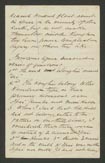 Cameron to HowittRegistration Number hw0188Author —Physical Description —
Cameron to HowittRegistration Number hw0188Author —Physical Description — -
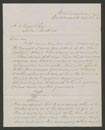 Cameron to Howitt 23/11/1882Registration Number hw0189Author —Physical Description —
Cameron to Howitt 23/11/1882Registration Number hw0189Author —Physical Description — -
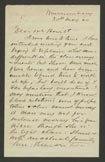 Cameron to Howitt 30/05/1900Registration Number hw0190Author —Physical Description —
Cameron to Howitt 30/05/1900Registration Number hw0190Author —Physical Description — -
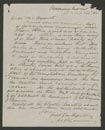 Cameron to Howitt 14/06/1900Registration Number hw0191Author —Physical Description —
Cameron to Howitt 14/06/1900Registration Number hw0191Author —Physical Description — -
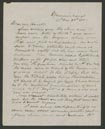 Cameron to Howitt 20/06/1900Registration Number hw0192Author —Physical Description —
Cameron to Howitt 20/06/1900Registration Number hw0192Author —Physical Description — -
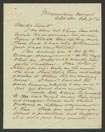 Cameron to Howitt 21/06/1900Registration Number hw0193Author —Physical Description —
Cameron to Howitt 21/06/1900Registration Number hw0193Author —Physical Description — -
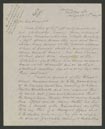 Cameron to Howitt 29/05/1902Registration Number hw0194Author —Physical Description —
Cameron to Howitt 29/05/1902Registration Number hw0194Author —Physical Description — -
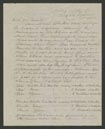 Cameron to Howitt 11/06/1902Registration Number hw0195Author —Physical Description —
Cameron to Howitt 11/06/1902Registration Number hw0195Author —Physical Description — -
 Draft Howitt to CameronRegistration Number hw0197Author —Physical Description —
Draft Howitt to CameronRegistration Number hw0197Author —Physical Description — -
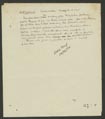 Draft Howitt to CameronRegistration Number hw0199Author —Physical Description —
Draft Howitt to CameronRegistration Number hw0199Author —Physical Description — -
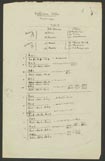 Howitt Notes on WonghibonRegistration Number hw0200Author —Physical Description —
Howitt Notes on WonghibonRegistration Number hw0200Author —Physical Description — -
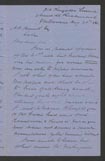 Cameron to Howitt 20/08/1884Registration Number hw0258Author —Physical Description —
Cameron to Howitt 20/08/1884Registration Number hw0258Author —Physical Description — -
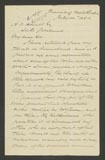 Letter from Cameron to Howitt 14/July/1884Registration Number hw0305Author —Physical Description —
Letter from Cameron to Howitt 14/July/1884Registration Number hw0305Author —Physical Description — -
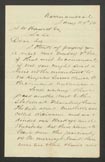 Cameron to A. W. Howitt 1884 January 29Registration Number hw0387Author —Physical Description —
Cameron to A. W. Howitt 1884 January 29Registration Number hw0387Author —Physical Description — -
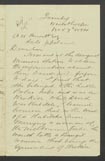 Cameron to Howitt 7/11/1884Registration Number hw0409Author —Physical Description —
Cameron to Howitt 7/11/1884Registration Number hw0409Author —Physical Description — -
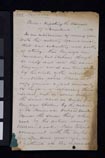 Cameron Queensland AboriginesRegistration Number tip70-10-41-10Author —Physical Description —
Cameron Queensland AboriginesRegistration Number tip70-10-41-10Author —Physical Description — -
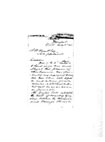 A L P Cameron to Howitt 4 July 1880Registration Number XM106Author —Physical Description Letter, handwritten in ink. One sheet, four pages. Condition: some foxing.
A L P Cameron to Howitt 4 July 1880Registration Number XM106Author —Physical Description Letter, handwritten in ink. One sheet, four pages. Condition: some foxing. -
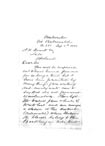 A L P Cameron to Howitt 8 September 1880Registration Number XM107Author —Physical Description Letter, handwritten in ink. One sheet, two pages. Condition: good.
A L P Cameron to Howitt 8 September 1880Registration Number XM107Author —Physical Description Letter, handwritten in ink. One sheet, two pages. Condition: good. -
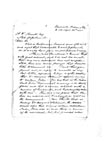 Letter from ALP Cameron 20 April 1881Registration Number XM109Author —Physical Description Letter, handwritten in ink. Three quarto sheets, six pages. Post script in margin on last page. Text 'struck through' [by Howitt] with vertical, blue-pencil lines. Condition: small tears on edges; foxing.
Letter from ALP Cameron 20 April 1881Registration Number XM109Author —Physical Description Letter, handwritten in ink. Three quarto sheets, six pages. Post script in margin on last page. Text 'struck through' [by Howitt] with vertical, blue-pencil lines. Condition: small tears on edges; foxing. -
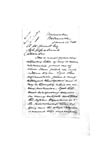 Letter from ALP Cameron 13 June 1881Registration Number XM110Author —Physical Description Letter, handwritten in ink. One sheet, four pages. Annotated 'Waart[?] language vocabulary' in blue-pencil, top left. Covering letter for return of questionnaire on language and relationship terms (not attached). Condition: good.
Letter from ALP Cameron 13 June 1881Registration Number XM110Author —Physical Description Letter, handwritten in ink. One sheet, four pages. Annotated 'Waart[?] language vocabulary' in blue-pencil, top left. Covering letter for return of questionnaire on language and relationship terms (not attached). Condition: good. -
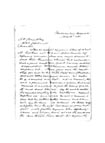 Letter from ALP Cameron 16 July 1881Registration Number XM111Author —Physical Description Letter, handwritten in ink. Two quarto sheets, four pages. Text 'struck through' [by Howitt] in blue-pencil. Condition: good.
Letter from ALP Cameron 16 July 1881Registration Number XM111Author —Physical Description Letter, handwritten in ink. Two quarto sheets, four pages. Text 'struck through' [by Howitt] in blue-pencil. Condition: good. -
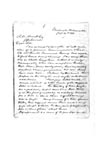 Letter from ALP Cameron 4 October 1881Registration Number XM112Author —Physical Description Letter, handwritten in ink. Two quarto sheets, four pages. Condition: good; faint foxing.
Letter from ALP Cameron 4 October 1881Registration Number XM112Author —Physical Description Letter, handwritten in ink. Two quarto sheets, four pages. Condition: good; faint foxing. -
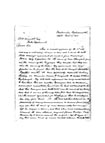 Letter from ALP Cameron 13 November 1881Registration Number XM113Author —Physical Description Letter, handwritten in ink, includes a listing. Three quarto sheets, six pages. Some sections of text 'struck through' [by Howitt] with vertical, lead-pencil lines. Condition: good; faint foxing.
Letter from ALP Cameron 13 November 1881Registration Number XM113Author —Physical Description Letter, handwritten in ink, includes a listing. Three quarto sheets, six pages. Some sections of text 'struck through' [by Howitt] with vertical, lead-pencil lines. Condition: good; faint foxing. -
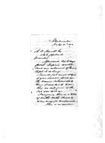 Letter from ALP Cameron 11 July 1882Registration Number XM117Author —Physical Description Letter, handwritten in ink. One folded sheet, four pages. Condition: good.
Letter from ALP Cameron 11 July 1882Registration Number XM117Author —Physical Description Letter, handwritten in ink. One folded sheet, four pages. Condition: good. -
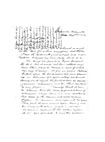 A L P Cameron to Howitt 3 August 1882Registration Number XM118Author —Physical Description Letter, handwritten in ink. Two quarto sheets, four pages. Additional text written across salutation on front page. Condition: good.
A L P Cameron to Howitt 3 August 1882Registration Number XM118Author —Physical Description Letter, handwritten in ink. Two quarto sheets, four pages. Additional text written across salutation on front page. Condition: good. -
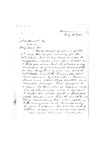 Letter from ALP Cameron 10 August 1882Registration Number XM119Author —Physical Description Letter, handwritten in ink. One quarto sheet, two pages. Condition: good.
Letter from ALP Cameron 10 August 1882Registration Number XM119Author —Physical Description Letter, handwritten in ink. One quarto sheet, two pages. Condition: good. -
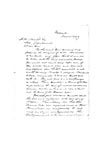 ALP Cameron to Howitt 24 July 1883Registration Number XM120Author —Physical Description Letter, handwritten in ink. Two quarto sheets, four pages. Text 'struck through' [by Howitt] with blue-pencil lines. Condition: loss of paper (and some text from a post script) torn from bottom of one corner of second sheet.
ALP Cameron to Howitt 24 July 1883Registration Number XM120Author —Physical Description Letter, handwritten in ink. Two quarto sheets, four pages. Text 'struck through' [by Howitt] with blue-pencil lines. Condition: loss of paper (and some text from a post script) torn from bottom of one corner of second sheet. -
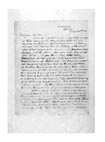 A L P Cameron to Howitt 26 December 1903Registration Number XM123Author —Physical Description Letter, handwritten in ink. Two quarto sheets, three pages. Condition: fragile; brittle paper.
A L P Cameron to Howitt 26 December 1903Registration Number XM123Author —Physical Description Letter, handwritten in ink. Two quarto sheets, three pages. Condition: fragile; brittle paper. -
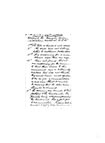 Answers to questions relating to the Wonghi Tribe, Lachlan District, NSWRegistration Number XM124Author Cameron, A L PPhysical Description Notes, handwritten in ink, undated. One folded sheet, four pages. Text 'struck through' [by Howitt] with vertical, blue-pencil lines. Titled and signed ALPC [ALP Cameron]. Condition: foxing, particularly along upper edge.
Answers to questions relating to the Wonghi Tribe, Lachlan District, NSWRegistration Number XM124Author Cameron, A L PPhysical Description Notes, handwritten in ink, undated. One folded sheet, four pages. Text 'struck through' [by Howitt] with vertical, blue-pencil lines. Titled and signed ALPC [ALP Cameron]. Condition: foxing, particularly along upper edge. -
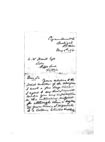 K H Bennett to Howitt 9 May 1880Registration Number XM32Author —Physical Description Letter, handwritten. Two sheets, seven pages. Good condition.
K H Bennett to Howitt 9 May 1880Registration Number XM32Author —Physical Description Letter, handwritten. Two sheets, seven pages. Good condition. -
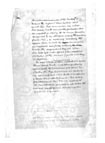 NotesRegistration Number XM615Author Howitt, Mr Alfred WilliamPhysical Description Notes, draft, handwritten in ink, undated. 53 foolscap sheets, 61 pages. Annotations and corrections throughout. Condition: generally good; small number of sheets with slightly tattered edges.
NotesRegistration Number XM615Author Howitt, Mr Alfred WilliamPhysical Description Notes, draft, handwritten in ink, undated. 53 foolscap sheets, 61 pages. Annotations and corrections throughout. Condition: generally good; small number of sheets with slightly tattered edges. -
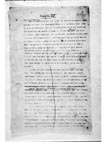 Chapter VI Tribal GovernmentsRegistration Number XM689Author Howitt, Mr Alfred WilliamPhysical Description Draft notes, typed and handwritten, undated. 59 pages consisting of 47 foolscap sheets, 8 half-pages, and 3 slips. With annotations, attachments and corrections throughout. Condition: some sheets with torn and tattered edges; some with foxing.
Chapter VI Tribal GovernmentsRegistration Number XM689Author Howitt, Mr Alfred WilliamPhysical Description Draft notes, typed and handwritten, undated. 59 pages consisting of 47 foolscap sheets, 8 half-pages, and 3 slips. With annotations, attachments and corrections throughout. Condition: some sheets with torn and tattered edges; some with foxing. -
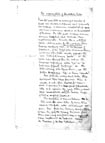 The organization of Australian tribesRegistration Number XM690Author Howitt, Mr Alfred WilliamPhysical Description Draft notes or article, handwritten in ink, undated. 56 foolscap sheets, 59 pages. Ordered with page numbers top right corner; and, four additional un-numbered pages at the end. One entitled 'Kamilaroi' and one 'Kundandaburi'. Condition: good.
The organization of Australian tribesRegistration Number XM690Author Howitt, Mr Alfred WilliamPhysical Description Draft notes or article, handwritten in ink, undated. 56 foolscap sheets, 59 pages. Ordered with page numbers top right corner; and, four additional un-numbered pages at the end. One entitled 'Kamilaroi' and one 'Kundandaburi'. Condition: good.
